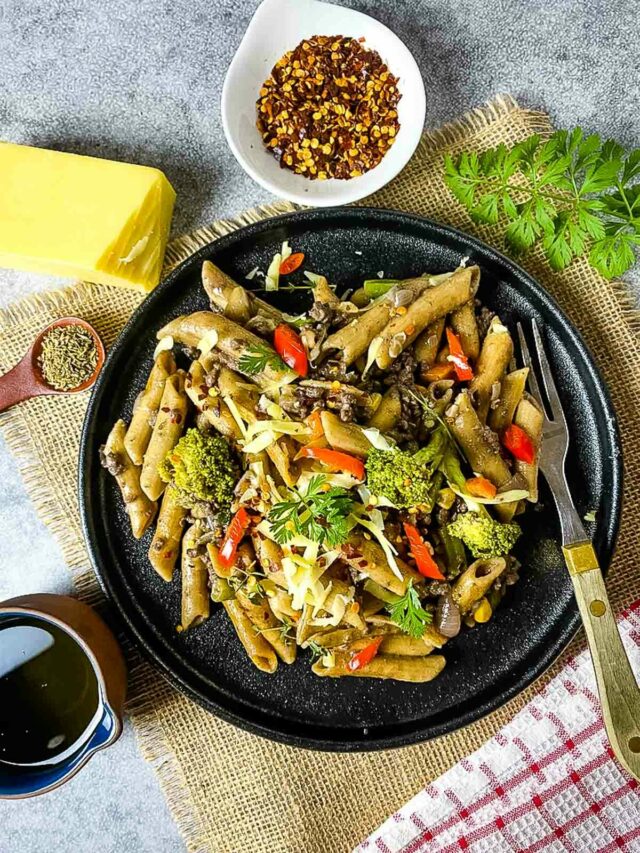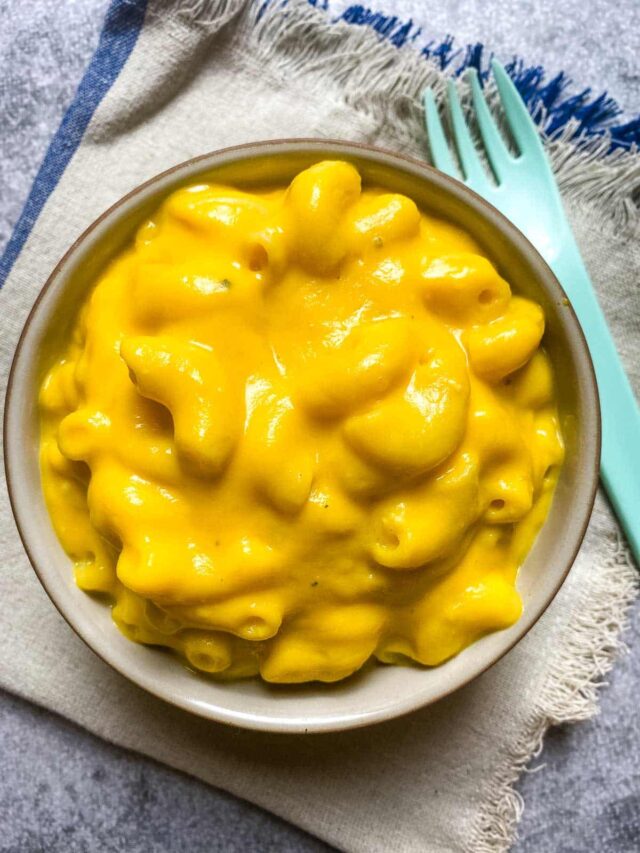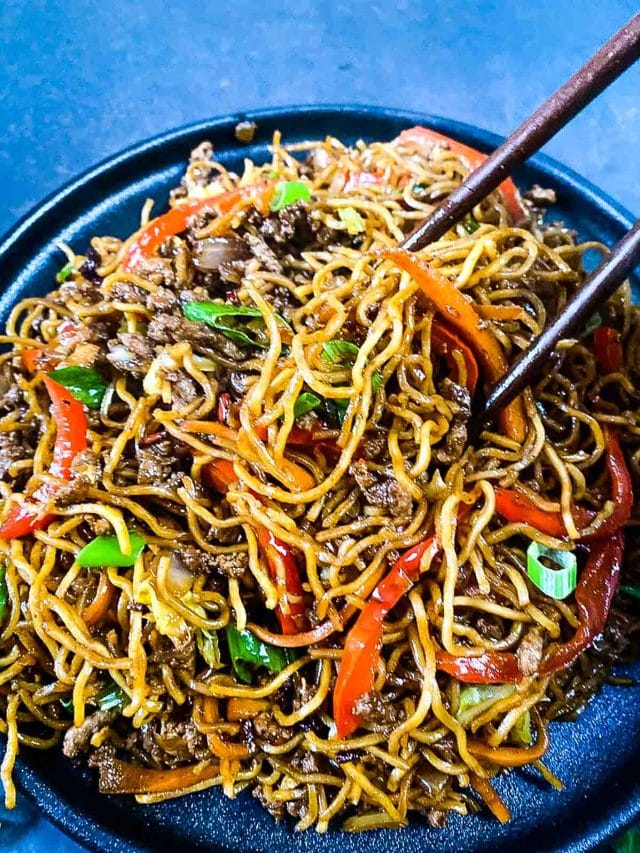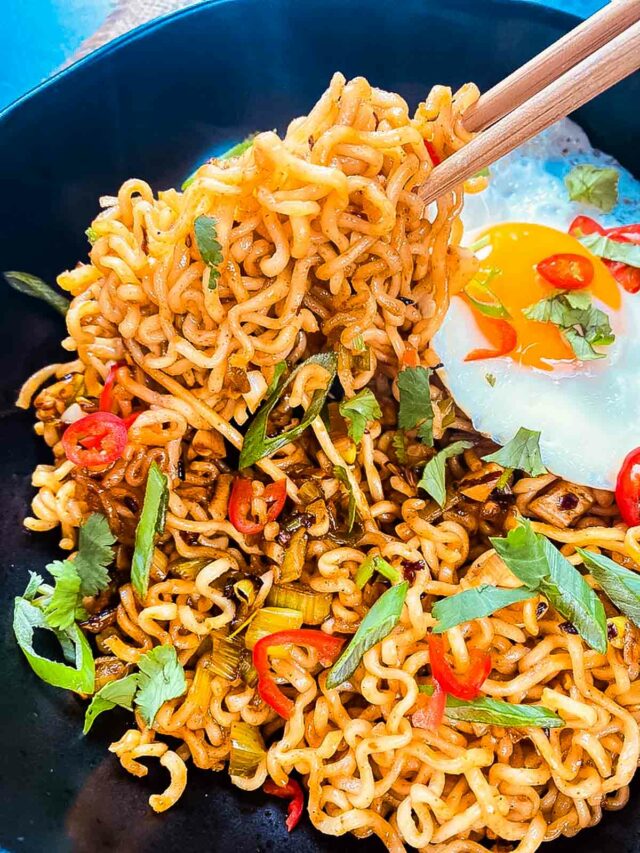This Thai Red Curry Pasta blends the vibrant flavors of Thailand with the comforting allure of a classic Italian dish. It combines the rich and aromatic notes of Thai red curry with the hearty and satisfying texture of perfectly cooked pasta.
I love pasta in all forms. My favorite is the classic Spaghetti Alla Bolognese and Mac and Cheese. But when I need a break from tomato-based pasta recipes, this creamy coconut milk-based sauce with vibrant Thai herbs provides just that. Welcome to the weird and wonderful world of fusion food!

I have always had an interesting reaction to this dish. “Thai curry pasta? That’s not a thing!” But then after a couple of bites, this recipe has managed to turn all the skeptics into fans! You know you have broken down their barriers when they eventually ask you for the recipe 🙂
So with apologies to all the Thai and Italian cooks out there, I present you this Thai-inspired pasta dish. Once you dig into this moreish plate of pasta coated in fragrant silky sauce you are going to have this in your monthly meal plan on repeat!
Another big hit with the crowd is this wonderful spiced and creamy coconut-based noodle dish Burmese Noodle Soup In Coconut Milk – Khao Suey.
Thai Red Curry Pasta is relatively fuss-free. I have avoided using garlic or onions to cut down on the peeling and chopping. The main depth and fragrance come from patiently frying the red curry paste in a bit of oil and letting it simmer in the coconut milk on low flame.
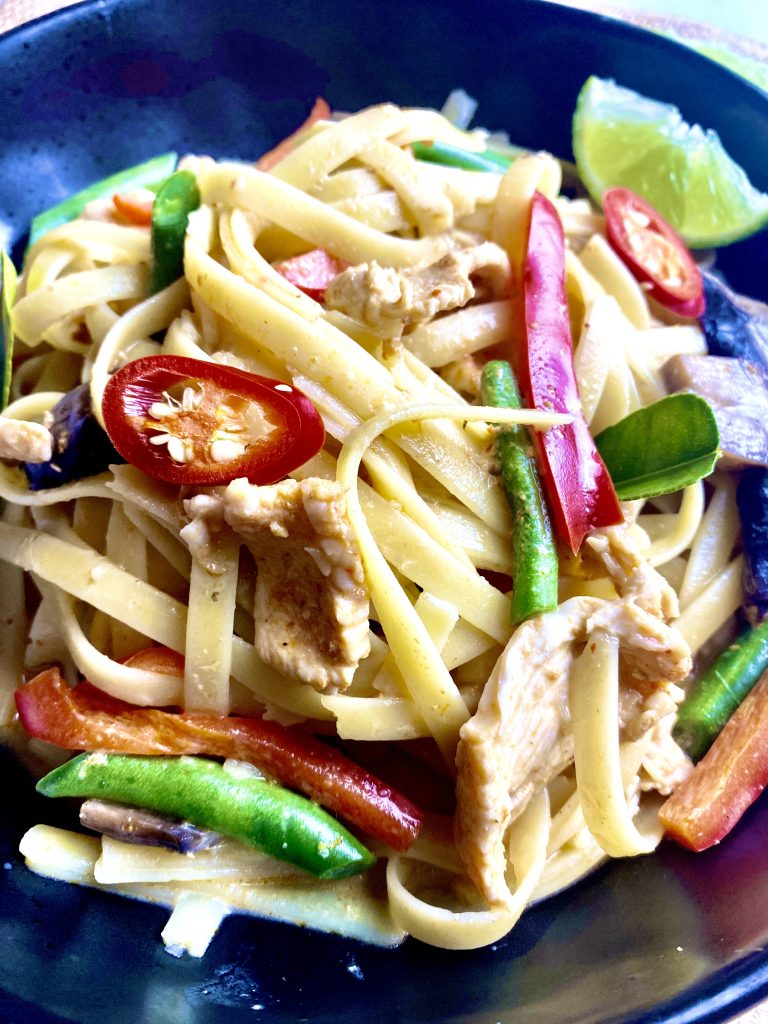
Reasons To Love This Thai Red Curry Pasta
- Flavor Fusion: Thai Red Curry Pasta brings together the bold flavors of Thai cuisine with the comforting familiarity of pasta. It’s the best of two worlds, and why not?
- Aromatic Spices: The rich blend of spices in Thai red curry, such as lemongrass, ginger, garlic, and chili, infuses the pasta dish with a fragrant aroma.
- Creamy Coconut Milk: The addition of creamy coconut milk not only adds a luxurious texture to the dish but also balances out the heat from the curry paste, creating a velvety sauce that coats every strand of pasta.
- Customizable Heat Level: Skip the red chillies, and reduce the curry paste for a milder sauce.
- Abundance of Vegetables: Feel free to add any stir-fry-friendly vegetables like bell peppers, broccoli, carrots, and snow peas, adding both color and nutritional value to the meal.
- Quick and Easy to Make: Thai Red Curry Pasta is a convenient and speedy dish to prepare, perfect for busy weeknights when you crave a satisfying meal without spending hours in the kitchen.
- Adaptable Protein Options: Whether you’re a meat lover, seafood enthusiast, or prefer plant-based proteins, this dish accommodates a wide range of protein choices, such as chicken, shrimp, tofu, or even just extra veggies.
Ingredient List
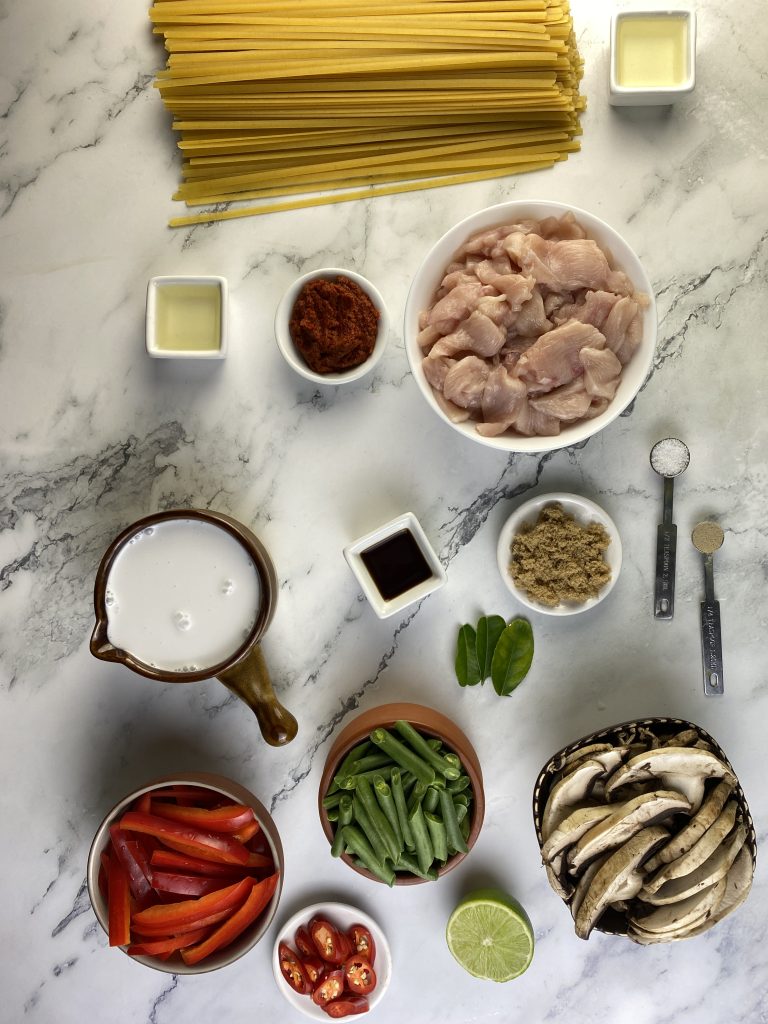
Oil: Use a neutral-smelling oil like vegetable oil, canola, etc. Do not use strong-smelling oils like olive oil. Olive is not suitable for high-heat stir-frying.
Chicken:
Vegetables: I have used red bell peppers, green beans, and mushrooms. You can also add Thai eggplants, zucchini, snow peas, baby corn, carrots, etc. Slice them uniformly so they cook evenly. Kaffir Lime leaves add more fragrance to your pasta. Skip this if you do not have it.
Fish Sauce: Fish sauce gives this fried rice a distinct Thai flavor.
Sugar: Use palm sugar if you have it. Or substitute with regular sugar. I have used raw sugar for this recipe.
Pasta: I have used Fettuccine. Feel free to use any kind of pasta you like.
Garnishes (optional): Basil leaves or Spring Onions
How To Make Thai Red Curry Pasta
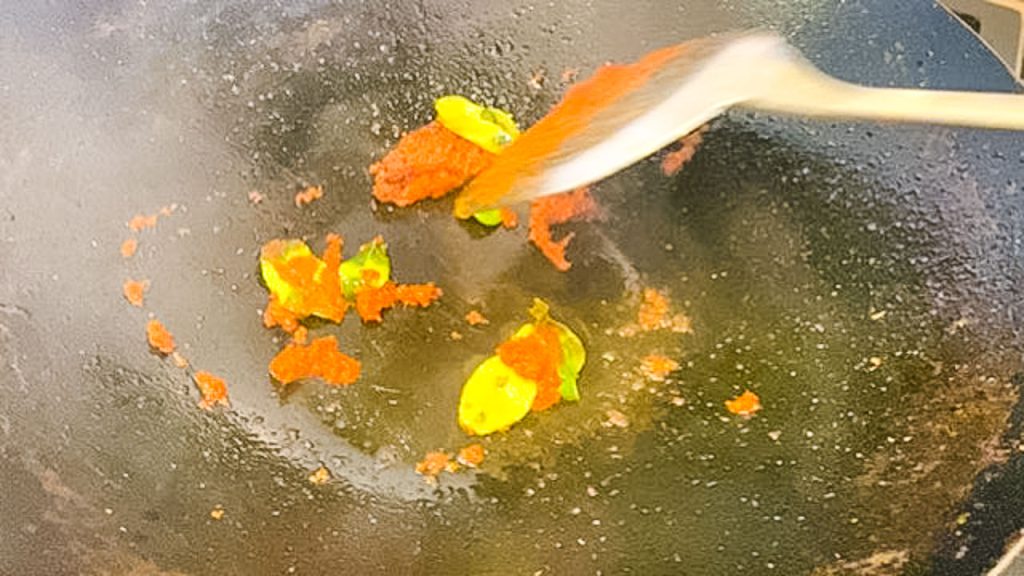
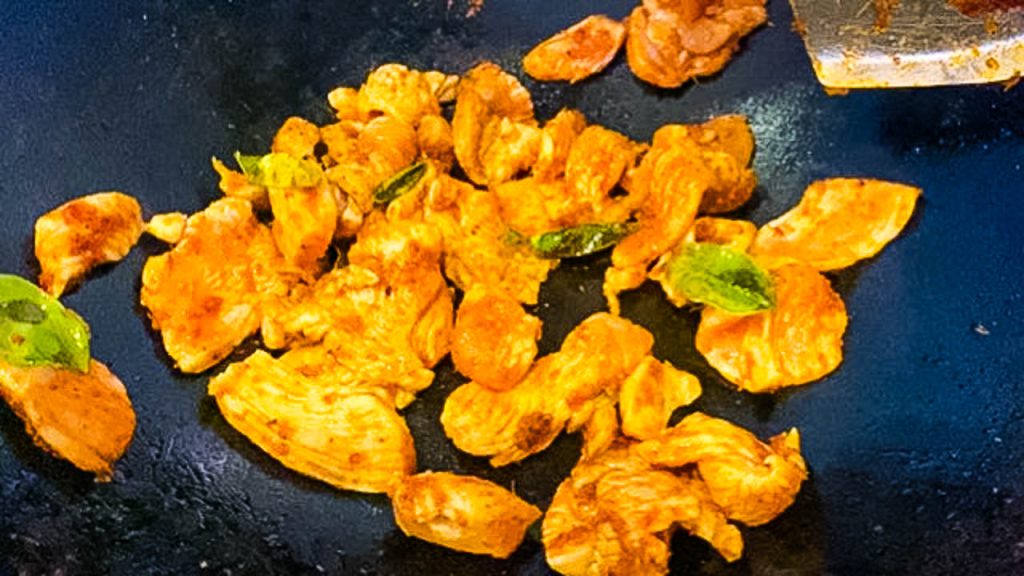

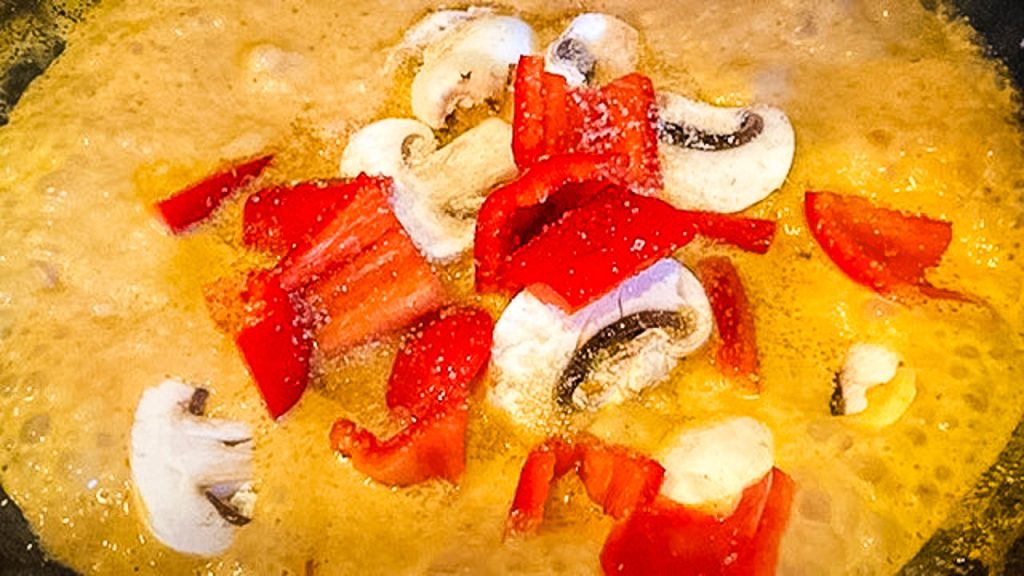
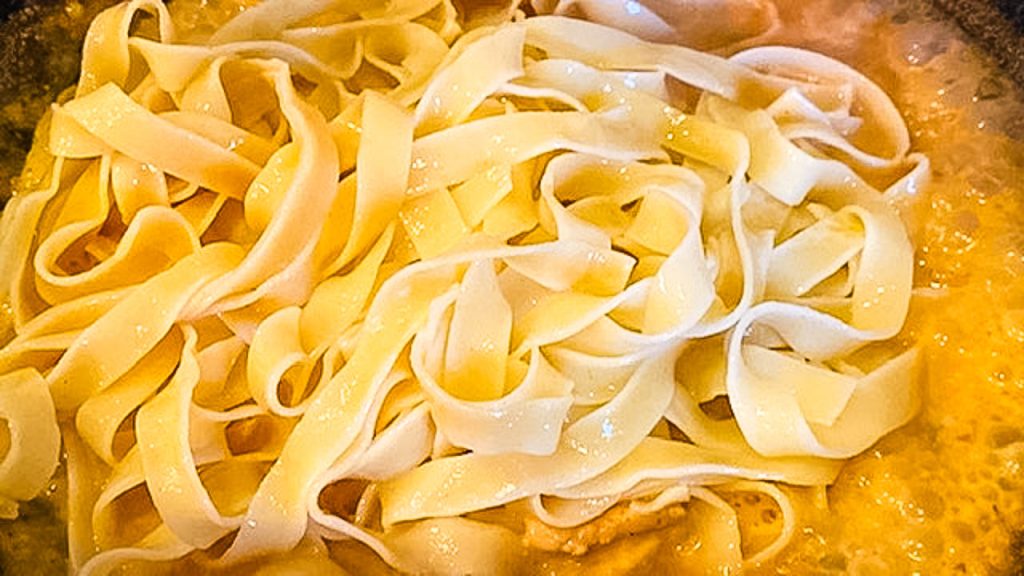
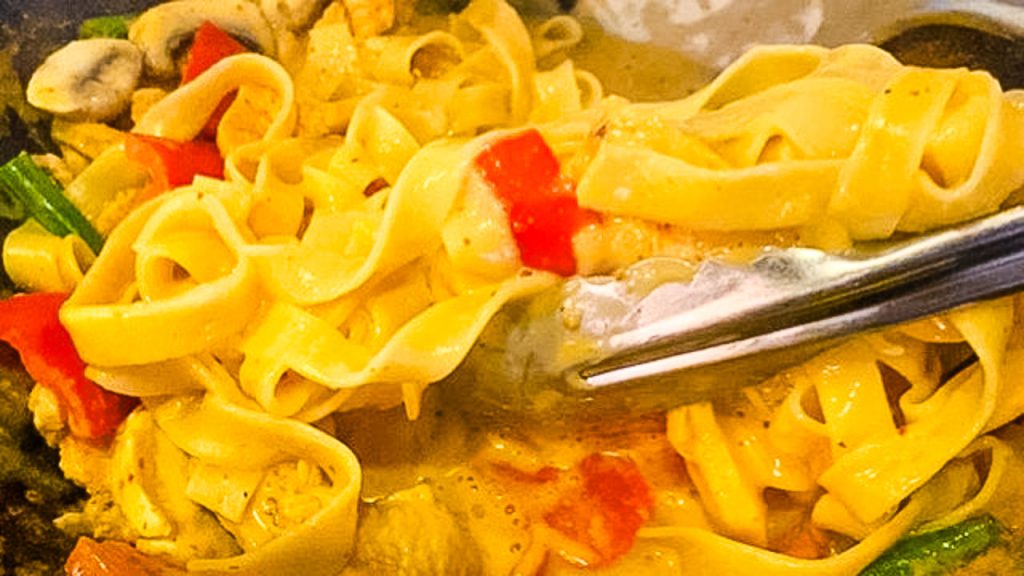
Some Useful Tips
Slicing Chicken: Slice chicken thin. The trick is to identify the direction of the muscle fibers (the “grain”) running through the meat. Slice perpendicular to these fibers, rather than parallel. Slicing against the grain helps break up the muscle fibers, resulting in a more tender bite. Slicing thin makes it easier and faster to wok fry the chicken.
Frying The Curry Paste: Reduce flame and fry the curry paste slowly till the oil separates. This helps all the fragrant ingredients; like lemongrass, galangal, line leaves, garlic, etc to release their oils and fragrance. Do not hurry this step. It will make a whole world of difference to the final flavor of your dish.
Cooking Pasta: Cook pasta al dente, as per instructions on the package. Do not overcook it, as it will become even more mushier when dunked in the hot curry sauce. Pasta needs to have a ‘bite’.

Frequently Asked Questions About Thai Red Curry Pasta.
While this dish is certainly not authentic Italian or Thai, there is no reason why you cannot combine this Thai curry with pasta or noodles.
Red curry paste combined with coconut milk is a great substitute for tomato-based sauces. Do reduce the amount of curry paste to make it milder if required.
Traditionally, Thai curry paste can be used for stir-frying meats and vegetables, and making Thai curries. You can also use it in fried rice, noodles, soups, or as a marinade for meats and vegetables. It is a versatile condiment and can be used in a variety of dishes.
Thai curry paste contains fermented shrimp paste. Thai curry includes fish sauce. Due to these two ingredients, authentic Thai red curries are not vegan. However, there are Thai curry pastes without shrimp paste, which can be used to make vegan curry. You will also need to skip the fish sauce.
The key ingredients in Thai Red Curry paste are Thai red chilies, galangal, lemongrass, garlic, shallots, fermented shrimp paste, kaffir lime leaves, coriander seeds, cumin seeds, peppercorns, and cilantro roots. Do check the label on the package for a detailed ingredient list.
While the primary ingredients in red curry paste, such as red chilies, shallots, garlic, lemongrass, and spices, are naturally gluten-free, some brands may include additives or thickeners that contain gluten. Additionally, cross-contamination could occur during manufacturing processes. Always check the label to confirm.
No. Gochujang is a Korean chili paste made of red chili pepper powder, glutinous rice, and fermented soybean powder which makes it distinctly different from Thai Red Curry Paste. However, it is delicious with some Korean Fried Chicken.
Yes! Substitute the sugar/palm sugar with your preferred low-carb sweetener. Instead of pasta, use Shirataki / Konjac noodles or any other keto-approved noodles or pasta.
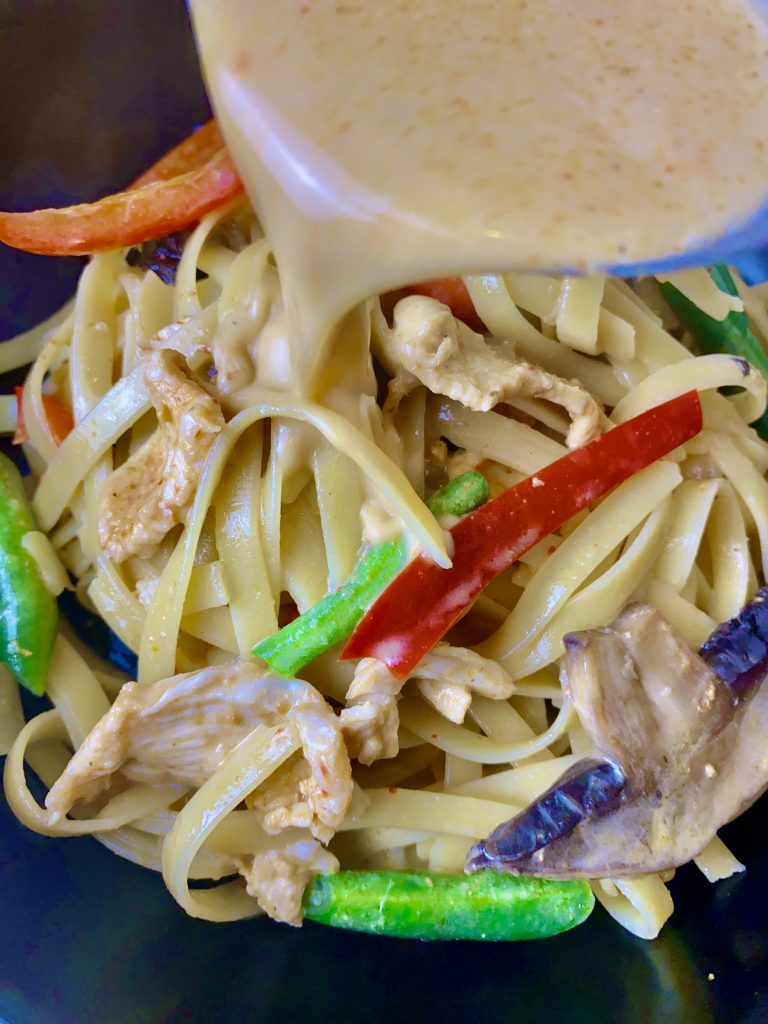
More Content You Might Enjoy:
Pasta recipes (without tomato-based sauce)
More Stir Fry Recipes
See all our Asian Recipes here.
HUNGRY FOR MORE?
Subscribe to my newsletter and follow along on Facebook, Pinterest and Instagram for all of the latest updates.
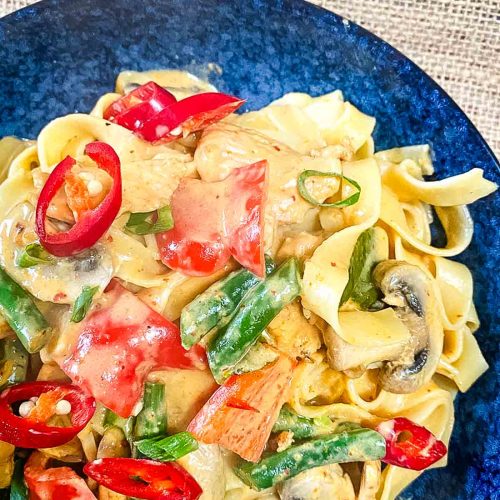
Ingredients
- 8 ounces of your favorite pasta (240 g) such as linguine or spaghetti
- 1 tablespoon vegetable oil
- 1 tablespoon red curry paste adjust to taste for spice level
- 1 pound Chicken breasts (about 400 g) sliced
- 1 can 13.5 ounces coconut milk
- 1 tablespoon sugar see note #1
- 1 teaspoon fish sauce
- 1 Lime (juice)
- 1 red bell pepper thinly sliced
- 1 carrot julienned
- 1 cup broccoli florets
- 1 cup baby corn halved
- Salt and pepper to taste
- Fresh cilantro and lime wedges for garnish
Instructions
- Cook the pasta according to the package instructions. Drain and set aside.
- In a large skillet or wok, heat the vegetable oil over medium heat.
- Add the red curry paste to the skillet and stir well.
- Add the sliced chicken and stir fry for about 2-3 minutes.
- Pour in the coconut milk and let it simmer for 2-3 minutes to allow the flavors to meld.
- Add the sliced bell peppers, green beans, kaffir lime leaves, and mushrooms to the wok. Cook the vegetables until they are tender but still crisp, about 3 minutes.
- Add fish sauce, sugar, and lime juice.
- Add the cooked pasta to the skillet, tossing it with the curry sauce and vegetables until well-coated.
- Serve the Thai Curry Pasta hot, garnished with fresh cilantro (optional) and lime wedges.
Notes
Nutrition
Disclaimer:
Nutritional Panel: Our nutritional values are calculated by Spooncular API. While we try our best to ensure these values are correct, please confirm these independently.
All information on our website is for general information only. Please seek advice from medical professionals to check if a diet, particular food, allergens, or a way of eating is suitable for you.
